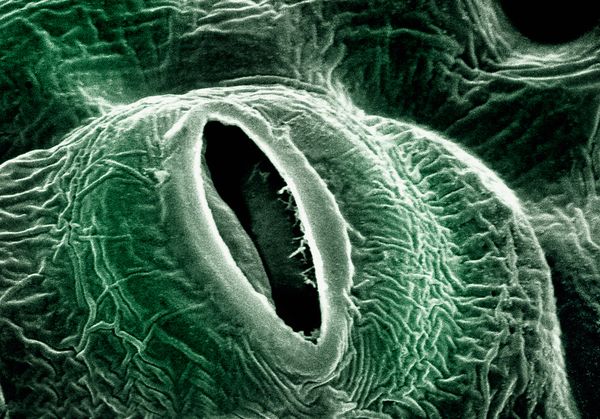While much of the world has baked in a heat wave this month, new research points to a surprising culprit when it comes to killing us—plants.
A study published this week in the peer-reviewed journal Atmospheric Chemistry and Physics found that during heat waves, plants tend to absorb less pollution from the air. That puts more people at risk of developing respiratory complications, which can lead to death. (Related: “How 100 Degrees Does a Number on You.”)
The research was conducted in the United Kingdom by the Stockholm Environment Institute (SEI) at the University of York. It was financed by the U.K. Department for Environment, Food and Rural Affairs.
National Geographic reached out to the study’s lead author, Lisa Emberson, but has not heard back.
The study describes the role plants play in mitigating air pollution by absorbing ozone. Ozone is well known for protecting Earth from harmful cosmic rays in the atmosphere, but when it’s produced at the Earth’s surface, it is the primary component of smog and can irritate human respiratory systems.
Ozone is produced at the surface by photochemical oxidation of carbon dioxide, methane, and various volatile organic compounds when in the presence of nitrous oxides (which are typically produced by vehicle exhaust and industrial emissions).
Normally, plants absorb ozone through their stomata, the small holes in their leaves. But during a heat wave, plants tend to close their stomata in order to decrease water loss. The drier the soil, the tighter the stomata close to help conserve water.
When plants close those pores, however, it means they can absorb less ozone. That leads to a greater buildup of ozone in the air.
Emberson and colleagues found that this loss of ozone absorption by plants resulted in an estimated 460 additional human deaths in the U.K. during the hot summer of 2006.
The scientists noted that plants can absorb up to 20 percent of the Earth’s ozone produced at the surface, so they point out the need to better understand the role of vegetation in air pollution. Ozone can also act as a greenhouse gas, so plants likely play a key role in regulating climate.
People most at risk from the effects of ozone include those with existing cardiovascular and respiratory issues, including asthma and heart disease. Such individuals may need to take extra care to avoid exertion during particularly hot and dry times.



Leave a reply